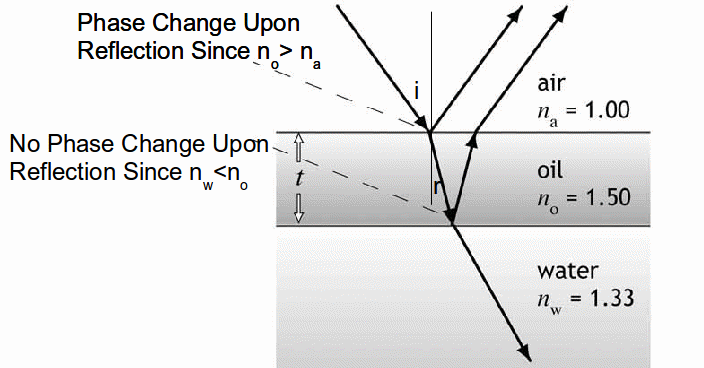When a small amount of petrol is poured onto some water, interference fringes can be see. Light is reflected from the upper and lower surfaces of the film. When the phase difference between the reflected waves is a whole number of wavelengths, fringes are observed.
Suppose the thickness of the film is![]() Light is reflected from the upper and lower surfaces of the petrol film. When light is reflected from a material with a greater refractive index a phase change of 180 degrees occurs. This occurs at the air oil interface but not at the oil water interface.
Light is reflected from the upper and lower surfaces of the petrol film. When light is reflected from a material with a greater refractive index a phase change of 180 degrees occurs. This occurs at the air oil interface but not at the oil water interface.

If the angle of incidence is![]() for the air oil interface, by Snell's law, the angle of refraction is given by
for the air oil interface, by Snell's law, the angle of refraction is given by![]() The extra distance the light must travel through the oil is
The extra distance the light must travel through the oil is![]() over and above the light that is reflected from the air oil interface.
over and above the light that is reflected from the air oil interface.
The path difference is![]() and for constructive interference (taking phase changes into account),
and for constructive interference (taking phase changes into account),![]()
